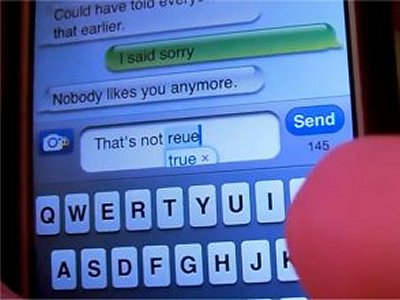
THE BULLYING OF YOUTH
Has social media made conflict worse for today's teens and what might be done about it?
What are we to make of the seemingly inexorable rise of cyber-bullying? The latest survey, from LSE’s EU Kids Online project (July 2014) shows that bullying online is now more commonly experienced than face to face taunts. This has been significant shift in just four years. Making a smart response to this challenge is vital to the health of a young generation, but the whole area feels so hazy it is unlikely to be addressed properly.
The most commonly used definition of bullying was created by the Swedish psychologist Dan Olweus and suggests there should be aggression, repetition and a power imbalance. On this basis, random and isolated acts of cruelty should not be deemed bullying; neither should the reciprocal trading of insults or blows, however hurtful they may feel. Adults, however, tend to use bullying as an umbrella term to describe a range of anti-social acts and are more likely to perceive spiteful commentary on social media as bullying, especially when their own children are targeted.
Cyber-bullying might be distinguished from ‘drama’, a pervasive term used by young people to describe ranges of conflict from the trivial to the serious. It has been defined by danah boyd as ‘performative, interpersonal conflict that takes place in front of an active, engaged audience, often on social media’. Anyone who remembers their teenage years can identify with this, but the digital era has introduced peculiar risks.
Social media allows the verbal aggression of one on another to remain in print; it has also introduced a wider audience to its deployment which has the power to make a potentially limitless number of people aware. This is radically different to the hurtfulness of playground name calling. Digital media can also be augmented as it spreads, to compound the insults. People may remember the Star Wars Kid, who created a simple home video of himself clumsily swinging a light sabre. Once a friend came across it and posted it for others to see, the video was edited to give it sound and special effects and received widespread media coverage and the attention of millions globally. No-one could have foreseen this effect, least of all the hapless fourteen year old boy involved.
These may be the inherent risks of exposure on social media, but cyber-bullying itself emerges from a wider social context, one it is not divorced from. The digital world becomes an extension of material bullying in or around school. It has also given it greater visibility. What, then, might be done to address it?
The unpalatable truth is that both the bully and the bullied are needy and worthy of adult attention. The propensity to bully is often driven by personal need; in this case, a teenager who may be struggling with acute issues of their own and who finds in an unfortunate other the outlet for their aggression, confusion and attention seeking. This may be of little comfort to the child who is picked on and the heartbreak their family feels, but any authorities who become involved in should give attention to the bully too.
Greater awareness of bullying in this traceable digital era should lead to smarter interventions. As local places of association for young people and adults together are reduced in scope and more of life becomes mediated through a screen, means by which teenage resilience and empathy can be strengthened and social media navigated are projects calling for attention. Churches might take note, for God breathes through the digital ether and, as people relate more this way, is active to make it serve his purposes too.
POPULAR ARTICLES

Obama's Covert Wars
The use of drones is going to change warfare out of all recognition in the next decades.

Through A Glass Starkly
Images of traumatic incidents caught on mobile phone can be put to remarkable effect.

What Are British Values?
Is there a British identity and if so, what has shaped the values and institutions that form it?


